This Artist Reenvisioned Marvel Superheroes in a Traditional Native American Style
Jeffrey Veregge uses formline, more typical of paintings and totem poles, to create a heroic mural
:focal(923x225:924x226)/https://tf-cmsv2-smithsonianmag-media.s3.amazonaws.com/filer/31/2a/312aa218-c86a-46b9-a308-f2cecda0bd10/veregge_wall_1_detail_4.jpg)
Iron Man, Spider-Man, Thor and a dozen other superheroes teaming up to fend off an alien invasion. It sounds more like the stuff of the megaplex than the museum. But this larger-than-life scene, displayed in a richly colorful mural, is what visitors to the Smithsonian’s National Museum of the American Indian in New York City will encounter as they make their way from the grand rotunda to its exhibition spaces.
Designed by artist Jeffrey Veregge, the work features all the elements of a great comic book battle—splashy text, panel-breaking brawls, giant villains and daring heroes. But the exhibition, titled “Jeffrey Veregge: Of Gods and Heroes,” also tells a deeper story about cross-pollinating influences between Indigenous traditions and modern pop culture. Veregge is Salish, part of the Port Gamble S’Klallam Tribe in Washington State, and the mural uses phrases from his tribal language, S’Klallam, as well as motifs from his tribe to offer his own distinct take on these familiar characters.
It’s created using formline, a style of art dating back more than 2,000 years, using ovoid, eyelid- and U-shaped design elements to depict figures, with lines swelling and slimming in curves, and deliberate use of negative space. The style is instantly recognizable from paintings, masks and totem poles depicting animals, individuals and objects of significance to the indigenous people of the Northwest Coast. While superheroes are novel subjects for formline, Veregge sees it as a natural continuation of the Native art tradition of the Northwest.
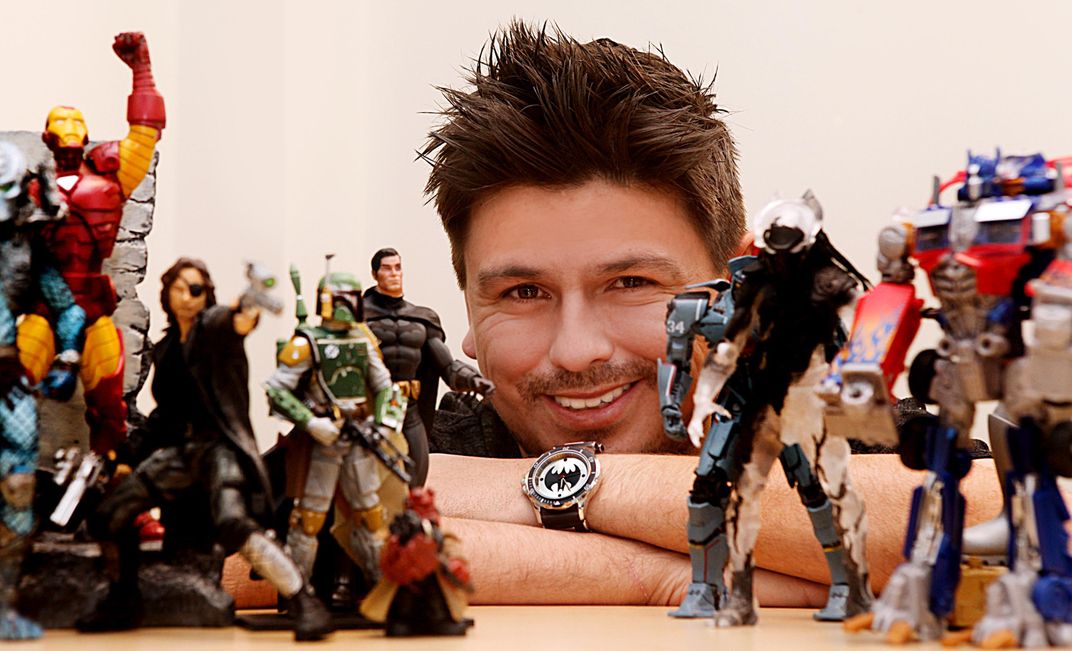
“My ancestors, and other storytellers across the globe before me shared the tales that were relevant to them,” says Veregge. “They would take the time to put them down on whatever materials that they had access to, be it cave walls, papyrus or hand shaped cedar. Basically, I do the same using the materials that are available to me—in this case a computer and Adobe Illustrator—sharing the stories that made me who I am and represent a strong part of my personality and core beliefs.”
It was comic books and pop culture that originally drew Veregge to art in the first place, who earned a degree in industrial design from the Art Institute of Seattle. “I went to school because I wanted to be an action-figure designer or Disney imagineer,” he says. “I wanted something fun, playful. My portfolio was all Star Wars, Star Trek and comic books.”
Working in traditional style came later, after Veregge was approached to do a logo for one of his tribe’s divisions.
“Growing up on the reservation, you see Salish art all the time, so I designed one,” he says. But, while the client who commissioned it “loved it,” Veregge felt he had more work to do in mastering these techniques. “I didn’t want other artists to look at my work and say, ‘he doesn’t know what he’s doing.’”
So Veregge’s cousin introduced him to David Boxley, a renowned Alaskan artist who specializes in Alaskan-style Tsimshian formline. Veregge studied with Boxley for half a year in his workshop, drawing with him in the mornings and helping him finish projects during the afternoons.
These two influences would eventually synthesize as he tried his hand at formline versions of Star Wars characters and superheroes, landing gallery placements and growing interest from outlets for both art and pop culture. Soon Fast Company, io9 and others were covering or commissioning his work, leading to comic book companies reaching out. First he did art for Judge Dredd, then dozens of others—X-Men, Captain America, Guardians of the Galaxy and plenty more. In 2015, he helped revive the brand’s first Native-American character, Red Wolf, for a new series launched in 2015. The character and his wolf companion, Lobo, also appear in “Of Gods and Heroes.”
“I get to put my fingerprint on characters, and legacies that I loved as a child,” says Veregge. At the same time, it allows him to show the ongoing relevance of traditional Native art, and “that formline can still be used today in sharing our stories.”
Even as he’s found artistic fulfilment and success in shaping the superhero worlds he’s always loved, Veregge still sees himself as a comic book fan at heart. That comes through as he talks about an Avengers-related show in Los Angeles he took part in just in time for the 2015 release of Avengers: Age of Ultron. Driving to a meeting, Veregge’s wife, seated in the passenger seat, looked at her phone and exclaimed “Oh my God!”
“I thought someone died. You grow up on a reservation, you deal with death more on a regular basis than outside. She’s tearing up, so I pull over,” Veregge describes. “I’m bracing myself, and she shows me on her phone. I say, ‘Yeah, it’s my art.’ Then she says, ‘No, look.’ And it was [Iron Man star] Robert Downey Jr., he went to the gallery and loved my work and was sharing it on Instagram and Twitter and Facebook. That was so awesome to see that—it’s still one of my favorite memories. I’m a big-time geek so to have that happen was amazing.”
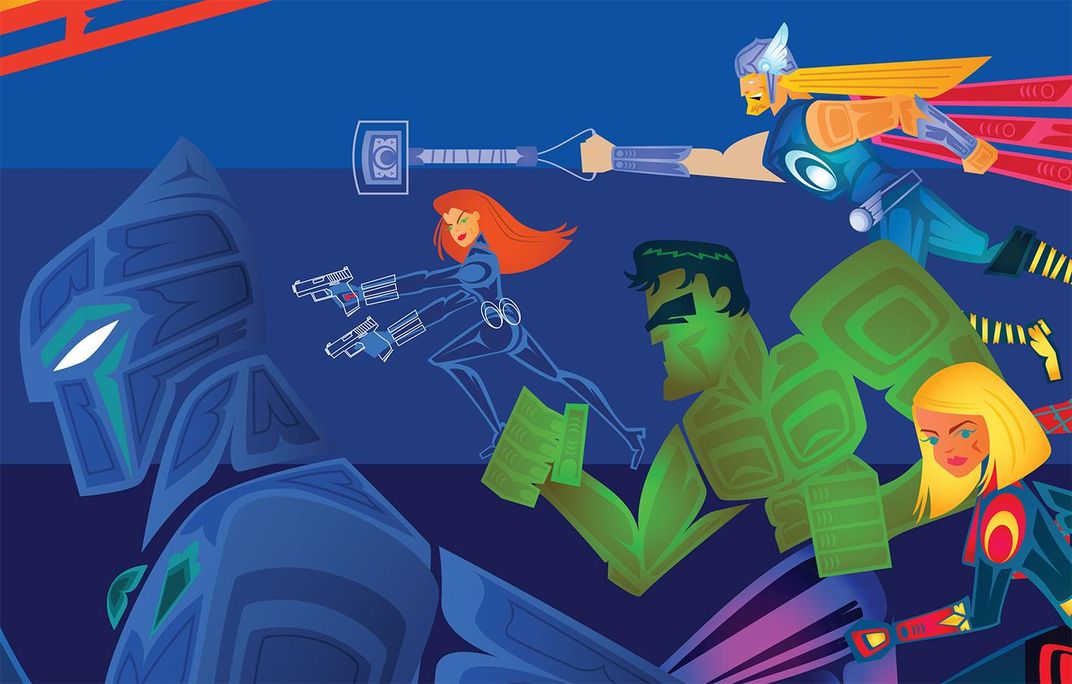
“He’s all about connecting with young people—he’s done a lot of work with kids and workshops and things like that, so we liked the idea of him creating something very accessible and very different than what we’ve done before,” says Kathleen Ash-Milby, associate curator for the National Museum of the American Indian, who oversaw this exhibition.
Discussions between her and Veregge about the work and how best to present it began almost three years ago, after he emailed the museum to see if a collaboration might be something in which they’d be interested. “Sometimes you find artists through other people or you see their work some other places, but occasionally someone contacts you out of the blue and ends up being an amazing contact,” says Ash-Milby. “That’s what happened with Jeffrey.”
Over a series of meetings and as Veregge began working with Marvel, the idea of doing a more immersive mural became the most appealing idea. This was confirmed after Veregge toured the space—his first visit to New York City—and got a sense of its scale.
They settled on the idea of a narrative that shows an invasion of Earth by celestial beings coming from outer space, towering over the New York City skyline (including the Avengers Tower), taking inspiration from comic book artist Jack Kirby’s Celestial series and incorporating more than a dozen Marvel characters.
A priority for the mural was to ensure it spoke to a diverse audience. “I wanted every child who went in there to be able to see someone and say, ‘they’re from where I’m from.’” With that in mind, one of the final changes he made to the work, after it had been submitted and was waiting for Marvel approval, came as he realized he had not included an Arab or Muslim character in the group.
“I sent an email and said, ‘I’d really like to add Ms. Marvel, who’s Muslim, to this,’” he says. “They said, ‘okay, we love that addition.’ I shifted some things around and put her in there and it actually helped balance things out for me. By adding her, it made it much more complete.”
“Jeffrey Veregge: Of Gods and Heroes,” curated Kathleen Ash-Milby (Navajo), is on view in New York City at the National Museum of the American Indian George Gustav Heye Center, Alexander Hamilton U.S. Custom House, One Bowling Green through October 13, 2019.
/https://tf-cmsv2-smithsonianmag-media.s3.amazonaws.com/accounts/headshot/Alex_Palmer_lowres.jpg)
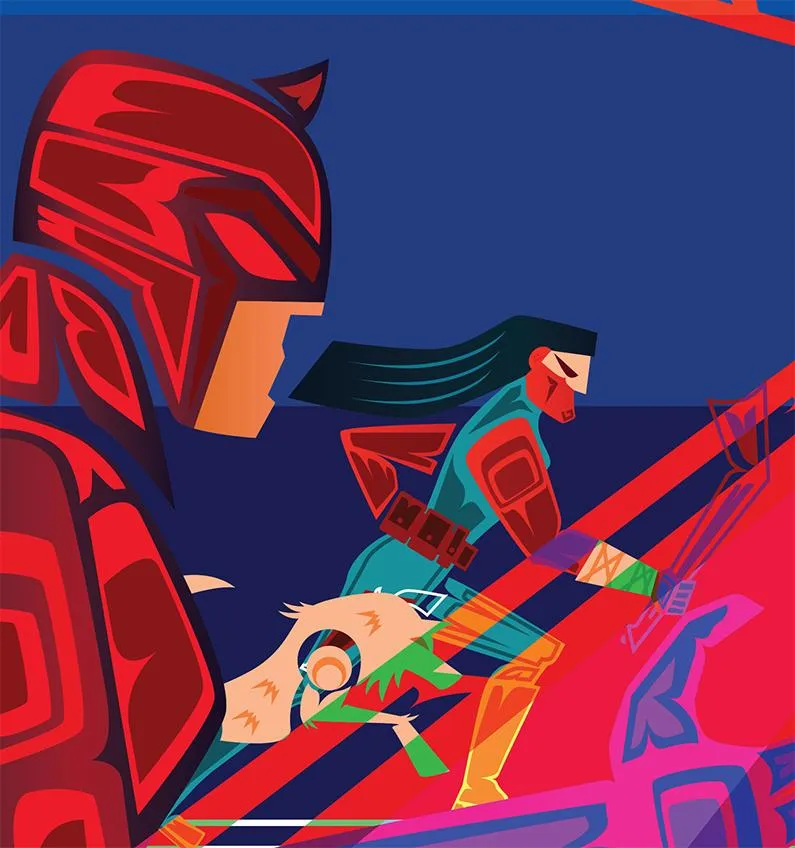
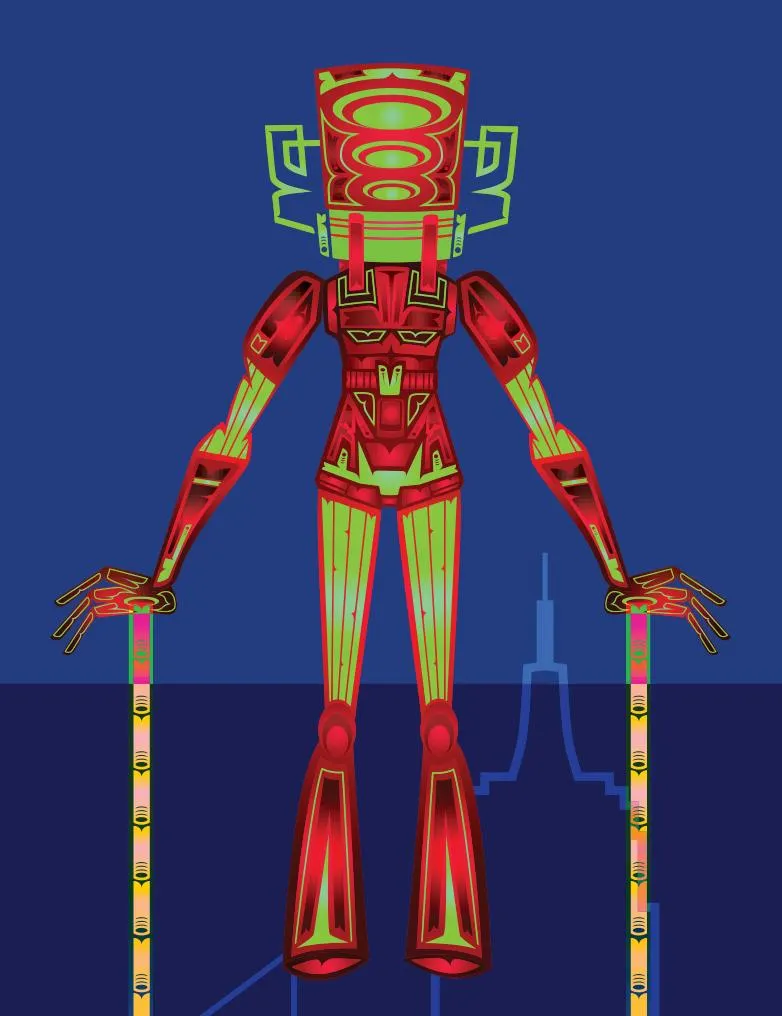
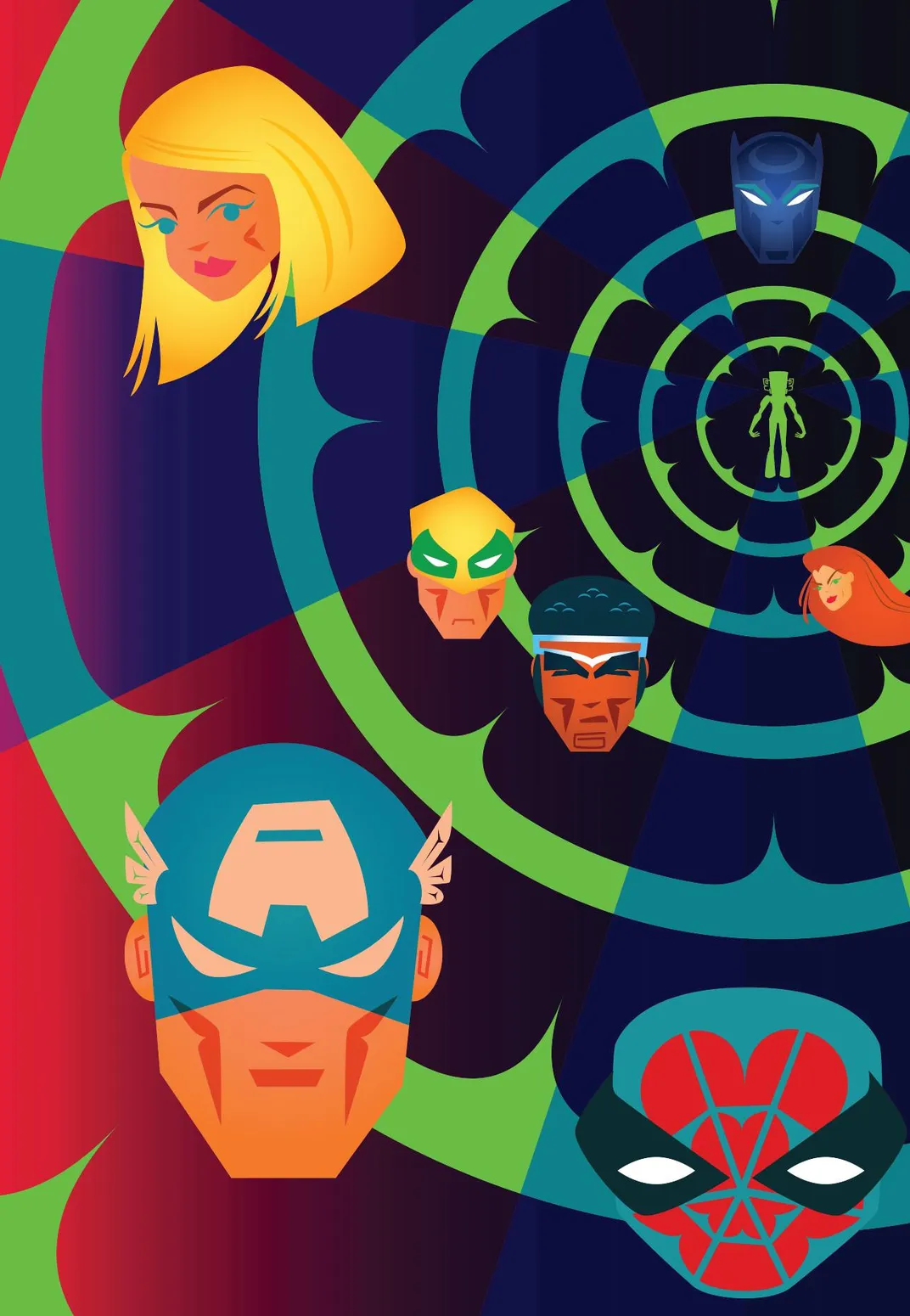
/https://tf-cmsv2-smithsonianmag-media.s3.amazonaws.com/accounts/headshot/Alex_Palmer_lowres.jpg)